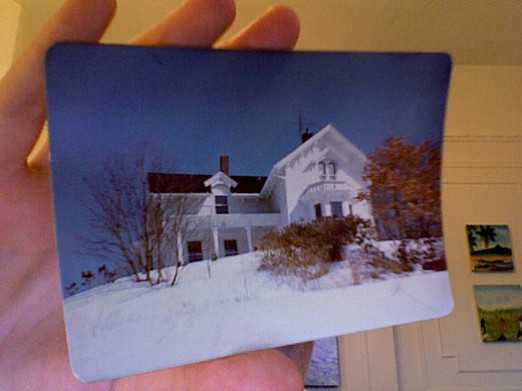Share
Kim Keever and the Mysterious Landscape
I spent all weekend trying to remember Kim Keever’s name. I remembered his images, but I had no idea where he showed, or how to find him. I kept ...

I spent all weekend trying to remember Kim Keever’s name. I remembered his images, but I had no idea where he showed, or how to find him. I kept googling things like “large-format aquarium images”, and it finally worked. In any case, I was thinking of Keever last week when I posted the Chilean lightning storms, which reminded me of the Hudson River School painters.
And Keever’s images are nothing if not Hudson Rivery; not surprisingly, he started off as a painter. I love the craftiness of this work. I remember being entranced as a kid by swirling food coloring in water, and these feel that way to me. I find some of the images much more striking than others, but the whole idea of these worlds being created in that aquarium makes them all interesting. I found an interview with Keever on the NY Arts Magazine site; excerpts are below. You can see more Keever work at Kinz, Tillou+Feigen.

Fallen Tree
I used to step out the back door of my house in Virginia and look
across a beach and tidal estuary with pine trees and marshes and ocean
water spreading out to what seemed like infinity to the other side of
an estuary called the Machipongo Shore. I was mesmerized.
It was much later that I felt mesmerized by the paintings of Albert
Bierstadt, among others. He seemed to capture that feeling of the
beauty of nature for its own sake and the limitless quality of looking
out across a vast landscape. Since I realized that he was an artist
who was certainly not accepted historically into the realm of
conceptual art, it was more of a feeling of guilt that kept me from
appreciating the work even more. I very much wanted to be part of the
higher echelons of the art world and if I went around saying I liked
Bierstadt, I would most certainly have been viewed askance since
conceptual art has been so overwhelmingly powerful for so long. One
dare not go against this idea or be relegated to being called an
academic artist.

Winter 18

Turtle Skull Rock
That said, it was more of an accident that the miniature sets I
photographed in the water turned out to be more like Hudson River
school paintings. But it was certainly a huge break for me as an
artist since now I was “painting” model landscapes in an aquarium.
Since I was putting paint of different colors in the water it became
truer still. The gift in all of this was that here I was making
retro-paintings in a conceptual way through photography. I had
accidentally managed to combine the past and present in terms of art
history. Through photography I was able to realize 19th-century
landscape painting combined with 20-21st century conceptual art.
Though I admit that this all came about more by accident than design,
it has always felt like a great accomplishment to me.

Acid Rain
My early work in the aquarium involved plaster models of mountains
arranged into a landscape, the tank filled with water, various gel
covered lights and colored liquid paint dispersed into the water to
make cloud effects. The back of the tank was covered with translucent
Mylar and more lights were shining through this layer to create a sky
effect. Recently I have been working with a larger (200 gallon) tank
and have constructed a relatively large table in back of the tank. I
place various items (including miniature model trees) on the table and
in the tank. From the top of the tank in back, I have suspended a
large sheet of translucent mylar sloping down towards the back of the
table but suspended somewhat above it. Various puffs of cotton are
attached to the mylar to look like cloud banks. Lights shine upward
from beneath the back side of the table so that I get various lighting
effects similar to a sky with the sun low on the horizon. The back
surface of the tank is left uncovered so that from the front the view
through the water in the tank makes cotton cloud formations and table
top items visible. The other elements of water and gel covered lights
and paint in the water remain the same.

Western Spaces

Less than Strangers
Before I started using a fish tank in my work, I was working with
elaborate tabletop models, but it always seemed like something was
missing. I couldn’t get any kind of atmosphere. This made the first
work look like what it was, a photograph of a collection of plaster
mountains. I tried enclosing several of the models with clear plastic
and started placing lit cigarettes within the space to get some
atmosphere. This worked to a certain extent, but it never really had
the feel of clouds. The result was more like fog. Another major memory
as a child was living so far out in the country there were few modern
amenities. My dad would fill a glass with water and add canned milk to
it. Beautiful white clouds would disburse in the water and though it
didn’t taste that good the visual thrill made it go down easier. It
eventually dawned on me that an aquarium filled with water and a little
paint would give the appearance of a real atmosphere. After all, the
landscape we look out upon is mainly influenced by water vapor in terms
of the distance to the horizon line. What is water but highly
compressed atmosphere?

Palm 57

Ocean 28






